|
BULB LOG 27 7th July 2007

Dactylorhiza in garden
We continue to enjoy the Dactylorhiza in our garden as they are now just reaching their climax when all the flowers in a spike are out at the same time. I have also made a mental note that these clumps are now ready for splitting up because if I let them get congested they will not grow so well and will produce smaller stems with fewer flowers. I should do this towards the end of August as the flower stems start to turn yellow - I hope I remember.
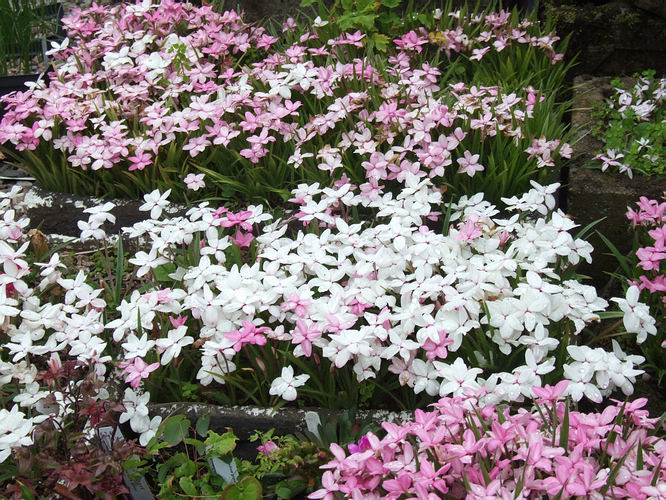
Rhodohypoxis
The other bulb that is in its full glory is Rhodohypoxis baurii in all the colour forms from white through pink to deep reds. I used to grow them all separately as clones but since I have many mixed seed raised groups I now much prefer the effect we get from mixed populations. I do need to act as referee sometimes as more often than not one clone is far more vigorous than the others and it would dominate the trough squeezing out some of the other colour forms if I did not intervene.
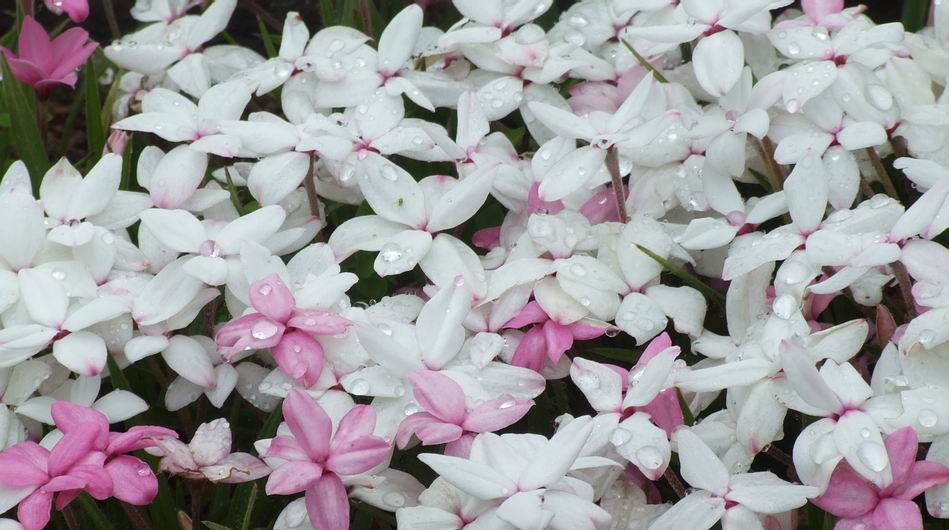
Rhodohypoxis flowers
These lovely dwarf bulbs are ideally suited to our Scottish summers as they are used to the summer rains of the Drakensburg Mountains of South Africa. The persistent rain we have had throughout June has seen them flourish without the need of further watering but I will start to give them a liquid foods supplement now to held build up the corms.
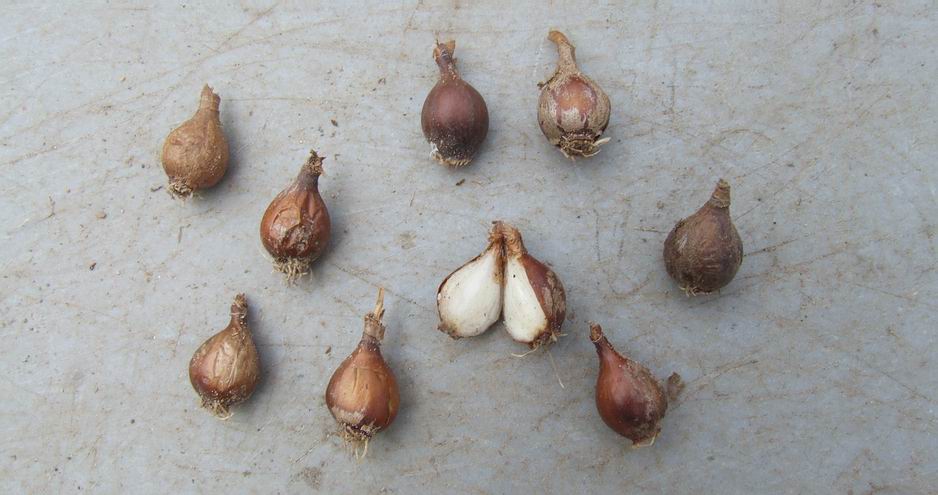
Narcissus romieuxii bulbs
As you know from recent bulb logs I have started my preparations for the big repot and as a part of these measures I have cleaned out and tidied my Potting Shed known here as the "world wide headquarters of Young Blubs Nic." (sic)
I have a fridge in this shed where I keep seeds and bulbs awaiting repotting or sending off - I no longer have this fridge switched on: it just provides a dark stable environment with very little variation in temperature. This storage method obviously works and it also shows the remarkable resilience and survival mechanism of bulbs as these poor narcissus have been stored in a polythene bag with dry sand since this time last year. They are slightly reduced in size - I can tell this as they do not quite fit their tunics but other than that they seem perfectly healthy. I cut one open just to see how well their scales have held on to the food and moisture; just waiting for an opportunity to grow.
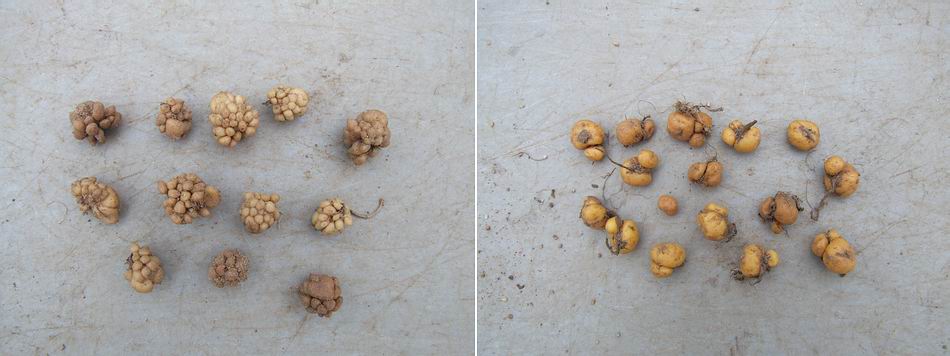
Dicentra cuccularia and canadensis
These bulbs of Dicentra cuccularia and canadensis have also spent 12 months in the fridge and there is very little evidence that they have suffered at all. I have planted them into the garden now as I think they deserve their freedom.

Crocus cartwrightianus corms
Now for some bulbs that have been grown a bit more conventionally but show signs that they were not entirely happy for one reason or another. These corms of Crocus cartwrightianus have not been repotted for a few years and the old tunics indicate how they have being taking themselves deeper into the compost - in fact I found several of them at the very bottom of the pot. This is clear evidence that I should not ignore so I have placed them at the bottom of a pot with just a centimetre of compost below them. Bulbs are always telling us what conditions they require we just have to learn to interpret the signals and then draw the correct conclusions.
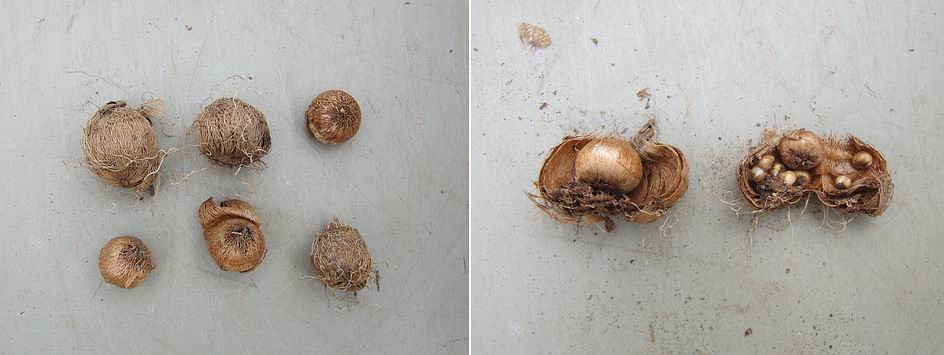
Crocus sieberi corms
These Crocus sieberi corms, on the left, look perfectly healthy until you remove some of the tunics to reveal the actual corms - this now tells a different story. On the right you can see the corms revealed and the left hand one is ok but not as big as it could have been, while the right hand one has disintegrated into many small corms instead of a flowering sized one. This is typical of a crocus that has not had sufficient watering in the critical growing periods. In my switch to plastic pots I have been too cautious about water logging and I have obviously not been watering enough so the corms have been unable to grow properly. Fortunately bulbs are experts at survival and I now have more corms to try and grow better next season.
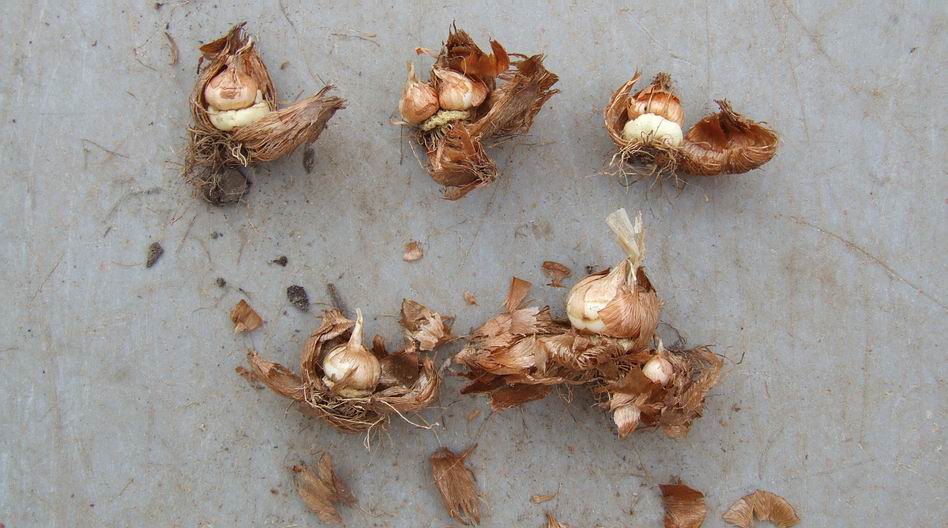
Not happy Crocus corms
Here is another sign of poor growing conditions where the old corm has not given up its entire food store to the new corms. All that should remain of the old corm is a withered remnant at the base of the new corm but here I have a very distinct old corm and small new corms. I am not so sure what the cause of this is exactly - I know it is partially due to a shortage of moisture as the above case but I sometimes wonder if there is also something wrong with the corms in the first place such as a virus. I will keep a careful watch on these corms next season.
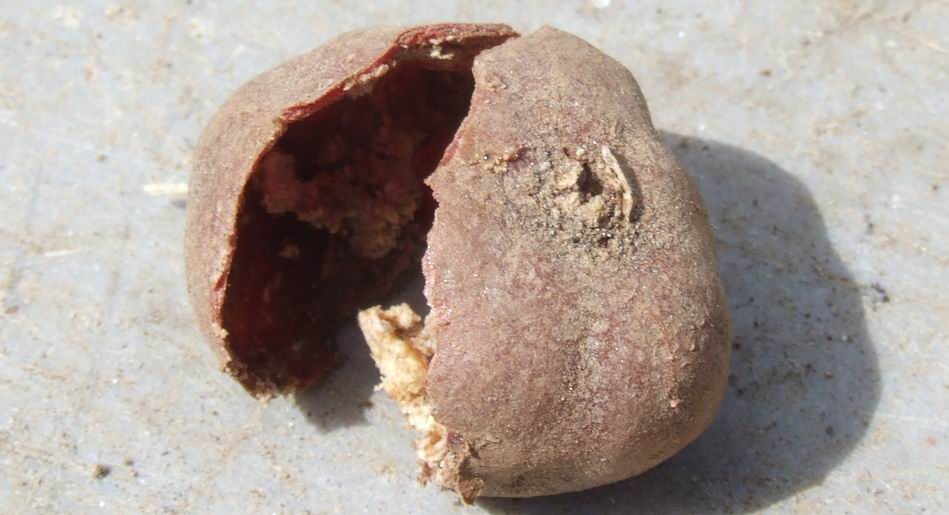
Tropaeolum azureum hollow tuber
Another problem that is not always obvious unless you are very familiar with the subject is found with some of the Tropaeolum species such as this T. azureum. I always hold the tubers weighing them up in my mind as I do and, yes, this one felt exceptionally light. A slight squeeze to test the firmness revealed my fear that it was hollow. The inside had completely rotted away without affecting the appearance of the outside skin.
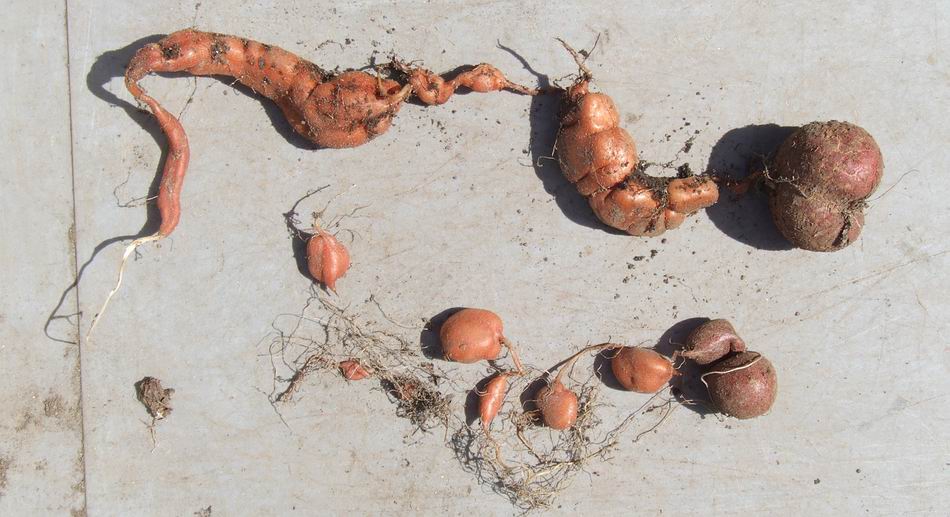
Tropaeolum tricolorum tubers
Tropaeolum tricolorum tubers are interesting as they come in two forms - to the right is last year's tuber, typically roundish with a red flaky skin. To the left are new stem tubers that have formed during the growing season between the tuber and the soil surface. This provides a great rate of increase for Tropaeolum tricolorum which sadly is not copied by its cousin Tropaeolum azureum, except sometimes in their first year from seed, when stem tubers can appear.
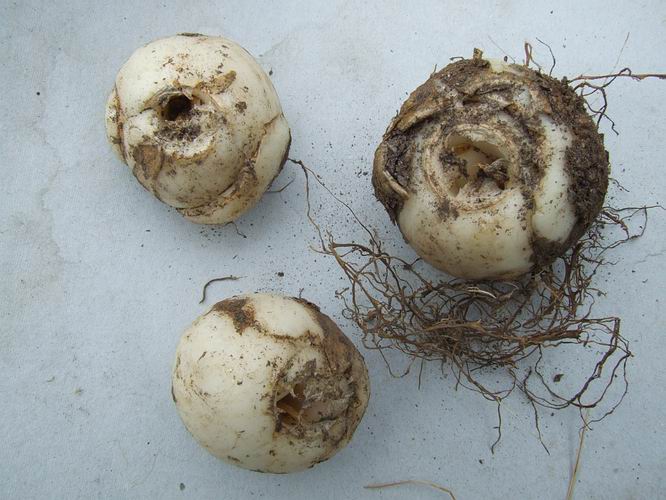
Fritilaria raddeana bulbs
Some nice large bulbs of Fritilaria raddeana that I have grown in pots for a number of years but this time I am planting them directly into the garden. I know they are perfectly hardy because I have grown some in the garden for many years without any harm coming to them however up until now I always kept this pot full as a back upů. just in case.

Cut in two Fritilaria raddeana
As I had plenty bulbs in this pot I decided to experiment and try out a method of propagation I have just read about - cutting the bulb in two half way up. The results should be that the base of the bulb should grow on as normal while the cut sections will hopefully form a number of bulbils. After allowing the cut surfaces to dry off in air I planted them in a pot in my normal mix both with the cut surfaces facing upwards. Fritilaria raddeana is one of those annoying bulbs that rarely splits so you have to rely on seeds to increase your stocks but I have just read of this method in Janis Ruksans' new book 'Buried Treasures'.
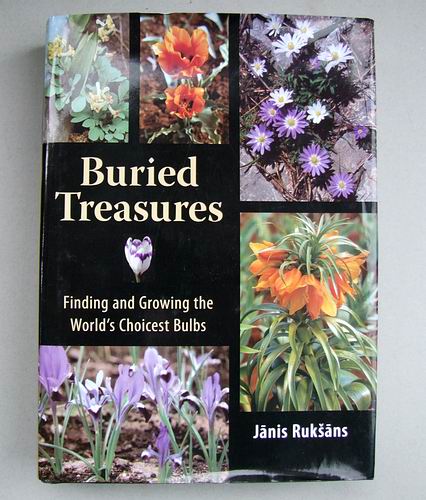
Buried Treasures
I received Janis' book a few weeks ago and I have been reading through it ever since.

Lots of pages
When I first flicked through it I was disappointed to see that there were no pictures in the text. I am a very visual person and much prefer it when the pictures are included on the same page as the text whenever possible.
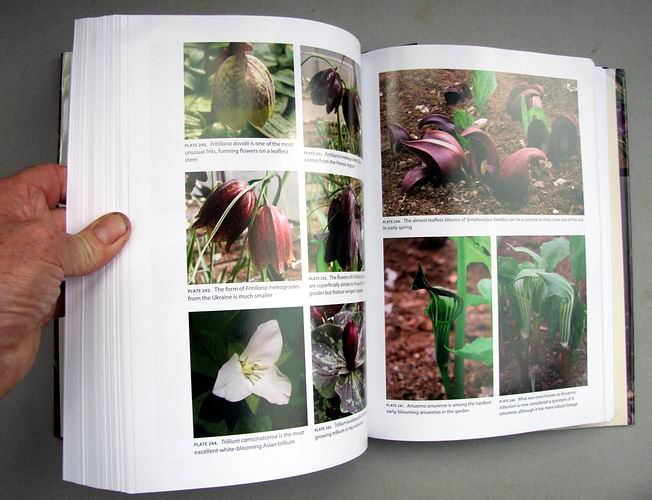
Pictures in two sections
Flicking further I found that there are plenty pictures contained in two sections but it does mean that you have to flick back and forward to see them when reading through the text.

Contents
Having got over my initial disappointment I started to read the contents page and could see that there is a wealth of information on all aspects of growing bulbs. Janis describes very well how he grows the bulbs on his nursery in what are often very cold and challenging conditions. He describes various ways of increasing your bulbs from seed sowing to artificial forced propagation like cutting up the bulbs of Fritillaria raddeana.

Crocus and habitat
By far the biggest part of the book is given over to an account of Janis' explorations in search of bulbs in the wild. Different chapters deal with different areas where Janis has collected bulbs and these are not just travelogues with a list of plants but give the book a semi-autobiographical flavour. They are well written and once you start a chapter it is very difficult to put the book down until you have finished that section. It is fascinating to read the circumstances surrounding the introduction of bulbs which, thanks to Janis, we now know well.

Iris and Tulips
There are plenty of mentions of other great bulb growers who have had some part in bringing us the wealth of bulbs that is currently available, such as Arnis Seisums who accompanied Janis on many of his exploits especially when looking for Iris.
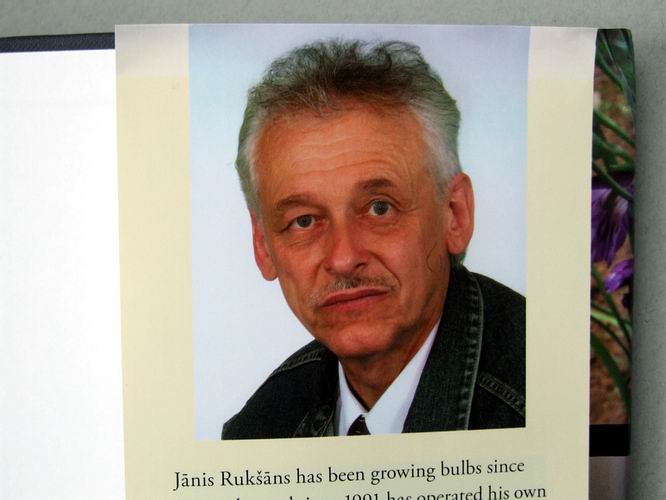
Janis Ruksans
I can only presume that the decision not to place the pictures through the text was one of cost but this is a small criticism of what is a fascinating book. Janis is not only one of the great plant hunters but he is also an expert grower having established a superb nursery. In the chapters on cultivation he freely shares his experiences, good and bad, describing his cultivation methods so we may all benefit and the chapters on his expeditions are enthralling. This is an excellent book and it is a must for anyone with the even slightest interest in bulbs and I can assure you once you have read it you will have a much better enjoyment of these fascinating plants and the places where they grow.
^ back to the top ^
|

